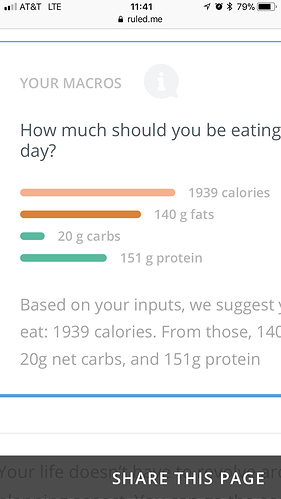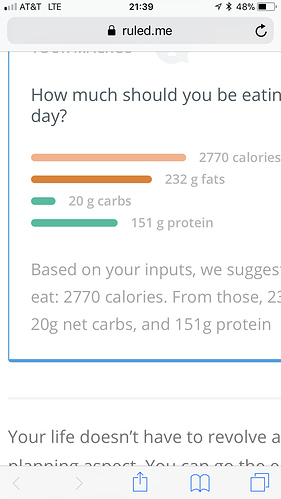Well I did a long extended fast. I broke it recently, went to the doctor to get checked out, and still waiting for my results. The doctor did my A1C at the office. It was 4.8. I have been getting ready for my next endeavor. I am going to get a DEXA scan on Tuesday June 5th. That night at midnight, I am going to start fasting on the days I work ( 3 days one week and 4 days the next. 12 hour shifts.) I am going to be strict on measuring everything I put in my mouth. I plan on eating One Meal A Day on the days I do eat. I feel That doing this will keep my weight loss continuing well. I have gained 10 pounds since I stopped my Extended Fast. Not really concerned about it. I have only eaten raw spinach, eggs, cheese, lunch meat, bacon and pickled jalapeños. I have checked all the macros. Very low carbs. Less than 20 a day. I will post my numbers when I get my results from the doctor, and when I get the DEXA scan. I plan on getting the DEXA scan done every three months, and as the weight keeps coming off I will have to make adjustments. Has anyone else done this? Any suggestions? Thanks everyone!!!
Personal n=1 idea
My only suggestion since you initially skipped over the whole fat adaptation thing to fast instead is to work out your macros and macro goals. Eating OMAD means putting all your food into that single meal. It is not about restricting calories. Just like your original idea of walking to burn calories in the fasting post. CICO (calories in, calories out) isn’t the name of the game here. While OMAD may help keep insulin reduced for longer during the day, it can be hard to eat enough. Some extend their OMAD into a 3-4 hour eating window. I’m leaving a calculator I personally use below. You’ll want to set the activity to sedentary and use 0 for the deficit. Unfortunately, calculators still use the CICO model which we now know isn’t correct so, set to maintain. The 20g of carbs are a limit, calories and fats are more of a goal (eat fat to satiety, being hungry means eating more) and the protein levels are another goal/soft limit. Going over protein isn’t the end of the world but, you’re trying to eat fat to satiety and not protein.
So the protein is more because the calculator is taking into account, that I am using my own fat stores too, I guess?
What did you choose for you protein number? Did you set yourself to anything besides sedentary?
I doubt this hasn’t been said 1000 times already, but I found this Jason Fung video really helpful in understanding some of the science of fasting and getting some ideas for how to incorporate fasting into a normal lifestyle. As so many have said, feast when you feast and fast when you fast. I’d summarize the video to say when you calorie restrict (as opposed to abstaining (or mostly abstaining) from calorie intake), your metabolism will go down and stay down and it may never recover. When you eat to satiety, you can then fast and your body will burn fat on the fasting day - at least after you use up your glucose and glycogen - without decreasing your BMR. Thinking about this, OMAD might be pushing you into calorie restriction if you’re not stuffing yourself.
I am very happy for your great success so far (against the odds  ) but, there is no way that this is your target kcal number without putting in a vast deficit into ruled.me. We know you are very big from prior posts and the implication that you have so much LBM per protein (though much less that when you started
) but, there is no way that this is your target kcal number without putting in a vast deficit into ruled.me. We know you are very big from prior posts and the implication that you have so much LBM per protein (though much less that when you started  ) so there is no way that your maintenance target should be 1939 kcal, which is what you should be targeting in between fasts. I am much smaller (yet still obese) and my target kcal is 2200.
) so there is no way that your maintenance target should be 1939 kcal, which is what you should be targeting in between fasts. I am much smaller (yet still obese) and my target kcal is 2200.
If you are planning your “feast” days then at least go to TDEE (which isn’t even a feast by definition). Otherwise you are fasting AND starving which may well drop weight (it did for the Biggest Loser crowd) but doesn’t mean it’s healthy for you if it crashes your BMR (as it did for the BL’s).
Hope your stats come out well from the doc’s - I’m sure they will, but just because you got away with a bunch of risks (starting before fat adaptation, going way longer than anyone would recommend, no medical supervision, no refeeding problems, etc.) don’t think you are bulletproof and have a unicorn metabolism.
You are trying to repair yourself for the rest of your life (I hope you don’t want to have to do this again), don’t be so impatient as to make the future harder just to get to a certain weight slightly faster. Fast… DON’T STARVE.
Those numbers were with a deficit of 30 %. So it was supposed to be maintenance. My mistake.
Here are the new numbers, look better? It looks like at that many calories, it will be at least two meals a day on eating days
That’s more like it! 
Not your fault - it’s the stupid default CICO logic in an otherwise great keto website.
Remember that a cycle of fast/feast requires feasts… I don’t do this so can’t really advise but from what I remember from others doing this, the feast days are supposed to be feasts, i.e. above TDEE/maintenance. When you do one 3-4 day EF a month, no feast is required but if half or more of each week for a sustained period is your objective (and why shouldn’t it be), I believe the feast part needs to be better thought out. I’m not sure OMAD is really helpful in this scenario since it just makes feasting logistically difficult and maybe unpalatable. Especially after 60 days of fasting, 3000kcal gorging may be tricky? I would check this (Very long) thread out for ideas and other’s experience. It definitely works for some.


